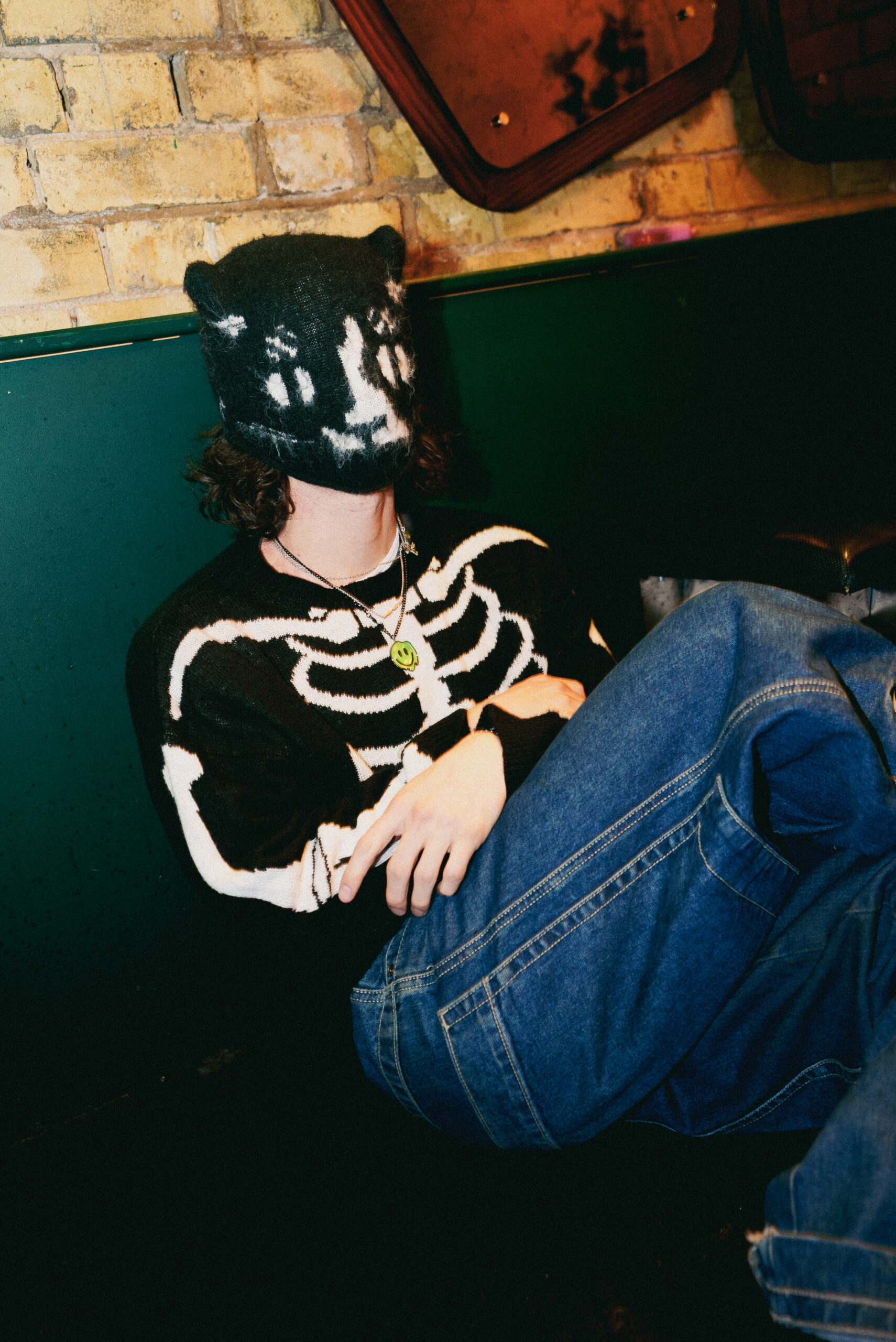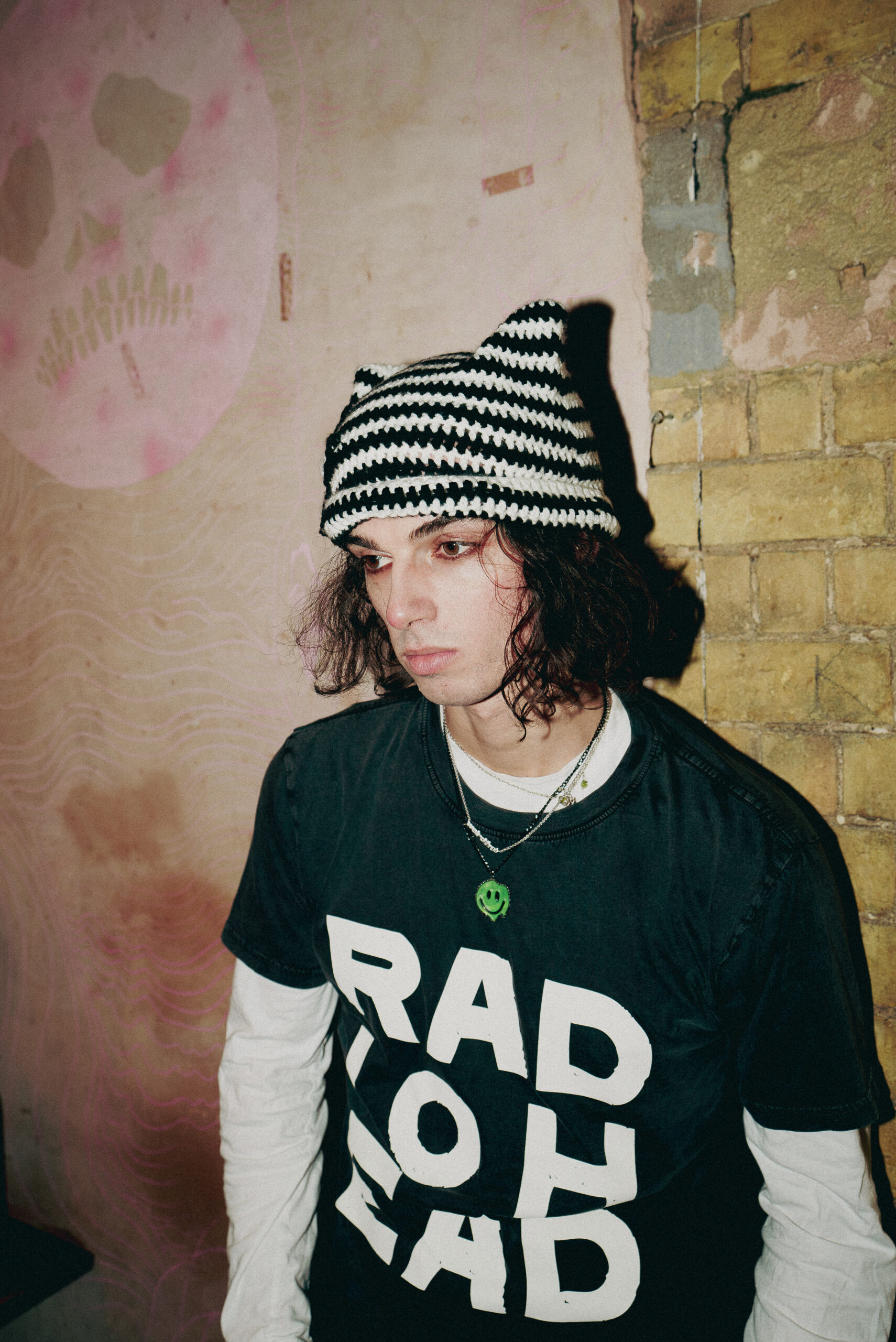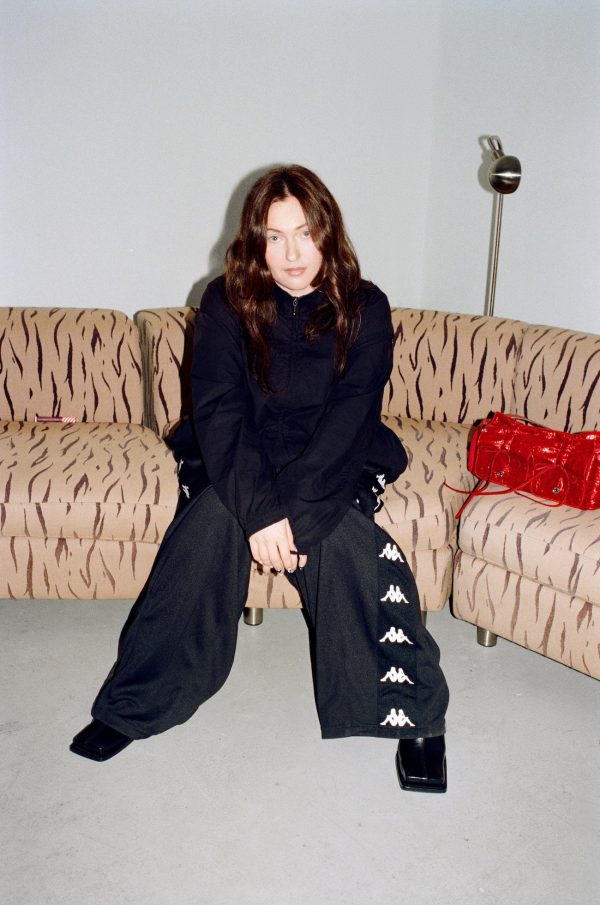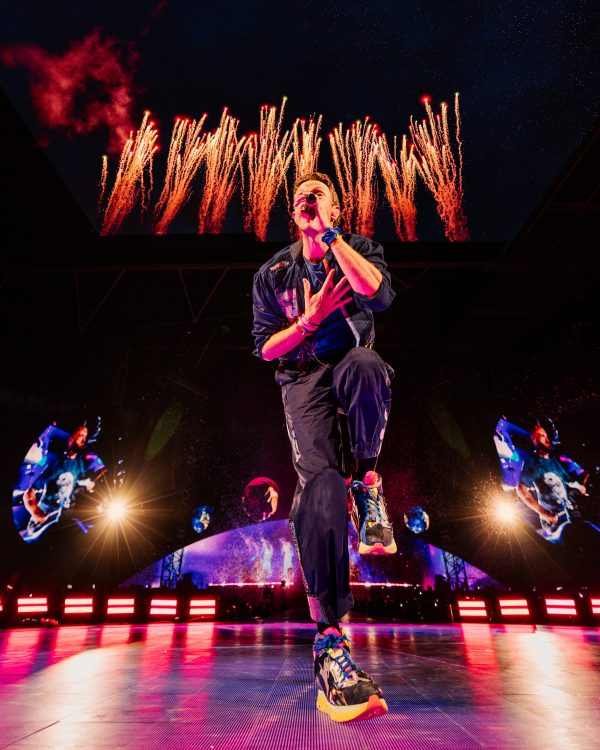
Renowned Dutch painter Hadassah Emmerich takes center stage as one of the most influential female artists of her generation, captivating audiences with her exuberant, sensual paintings that transcend traditional boundaries. Hadassah Emmerich’s artistic repertoire brims with exuberance, spanning paintings, collages, and murals that intricately meld stylized depictions of exotic fruits, body parts, and vegetal elements into bold, eroticized tapestries. Her oeuvre serves as a deeply immersive journey into the realms of body and identity, seamlessly navigating the intersections of the sensory and sensual while probing the complex landscape of desire, eroticism, and exoticism. The sensuality inherent in Emmerich’s work transcends mere surface aesthetics, manifesting in her meticulous use of colour and technical prowess.
Since 2016, she has ventured into innovative painting techniques, utilizing stencils crafted from vinyl flooring. These stencils, bathed in ink, are then pressed onto canvas, paper, or even walls. Drawing inspiration from the visual lexicons of advertising and Pop art, Emmerich’s creations dissect the aestheticization of the female form. Through her imagery, she confronts the paradoxical interplay of attraction and repulsion, intimacy and detachment, seduction and critique.
Schön! chats with Hadassah about her creative process and the provocative themes that fuel her groundbreaking art.
In your artistic journey, how has your dual heritage (German mother/Indonesian father) influenced your artistic perspective and the themes you explore in your work?
I grew up in the south-east of the Netherlands in the 80s, a time when there wasn’t much discourse on identity. My parents divorced when I was 6, and from then on this heritage became split. When I was 15 years old, I joined a local amateur Hawaiian dance group together with other Indo-European girls from the region. With this group, The Kahluas, we would perform at so-called “Pasar Malams” – Dutch/Indonesian tropical markets with food stalls, music- and dance performances, Indonesian clothes, fortune tellers etc. Joining this group allowed me to reconnect to my mixed heritage through dance, even if it was in a completely appropriated form. In my final year of BA painting studies, I undertook a 3-month trip to Indonesia with the plan to study at an art school and explore what I would have in common with Indonesian people, only to come back with more questions.
However, it was the beginning of addressing the question of a mixed (Southeast Asian and European) identity in my artistic work. Taking up master studies in London (Goldsmiths College) a few years later formed a catalyst in my output and thinking around these themes, resulting in my solo show With Love from Batik Babe, at GEM, The Hague, in 2005. Simultaneously with sharpening my thinking around these topics, I had started integrating murals and painterly installations in my practice, and this combination allowed me to make large-scale statements both formally and conceptually, and this has remained a constant force in my work and development. An overarching interest to me remains the idea of creolization, of cultural cross-pollination and cross-breeding, which I guess can be retraced to my own ‘mixed’ background.
Your series navigates the complexities of desire and the female body. How do you balance portraying sensuality with critiquing societal norms and power dynamics?
Sensuality, desire and seduction are an inherent and crucial part of the theme of “fusing species” – like animals in a mating dance showing their brightest colours or largest tail – To me, there is an empowerment in displaying that vital energy, and channelling it to promote and celebrate open-mindedness and worldliness. My work celebrates the sensual gaze as a tool to defy regressive and conservative worldviews, especially regarding the position of women.
Your recent works challenge viewers with ambiguous shapes that can be interpreted as both natural elements and genitalia. What significance do you find in blurring these lines between organic forms and erotic symbolism?
I think there lies power in playfully manipulating the gaze to an extent that the viewer may find themselves being intrigued by work and only realize at a second sight that they are looking at a tongue licking a breast. By integrating erotic representations through a formal and stylized lens, it becomes like an optical illusion where the gaze keeps alternating between different perspectives. Blurring the lines also allows multiple ways of entering a painting, and helps to bypass a sense of shame. Furthermore, I believe that eroticism can be as present in the act of painting as in the representation of an erotic image.

Repetition plays a significant role in your creative process. How do you see the act of repetition contributing to the exploration of knowledge, meaning, and identity in your art?
It is through the technique of printing stencils that I have started to explore repetition as a way to address conceptual issues. One of the first important series I made in this way was “Cold Shoulder Series” (2016), a five-paneled canvas work displaying five different versions of the same composition in various color tones. The reference in the work was an adaptation of a packaging for hair dye that I had encountered during a visit to Curaçao and that had particularly grabbed my attention because of its design and possible cultural target audience; a Hispanic model looking over a milky white shoulder and whose hair colour was changed for each colour variety through photoshop. The shoulder became the Leitmotiv in my work, while each repetition had a slight change of skin colour and the hair displayed five different tonalities of dark hair. The repetition allowed me to speak of testing culturally determined beauty ideals – while opening up a ‘preference game’ with the viewer: do you prefer the one with the blue-black hair or the one with the purple highlights?
Repetition also questions the fact that there would be one original that was ‘the first’, but, like in Cold Shoulder Series, there are five equally relevant variations.
Your creative process involves a meticulous exploration of shapes and patterns. Could you delve deeper into how this process allows you to infuse each detail with layers of meaning, and how it contributes to the overall narrative of your work?
As a result of my interest in creolization, I have started merging and fusing shapes, motives and patterns to see which new ‘species’ come out. This ‘fusion’ is in fact at the heart of my work, allowing endless new variations to take shape, contrasting the idea of ‘purity’ or an ‘original’. Recurring motives are stylized representations of human intimate body parts like breasts or labia, which get paired with botanical elements like flowers or exotic fruits, resulting in eroticized ornaments. I am interested in exploring how these ornaments can be re-compiled differently, for example using different colour toning and compositions, rendering them in cold or warm colour variations as in colour research and testing culturally inherited preferences.
Following from my interest in creolization, I have also become interested in the genetic manipulation of fruit – which is on the other side of the spectrum – where the goal is to create so-called ‘superfoods’ (with more nutrients or a more attractive colour). I have made a series of paintings in which halved fruits such as a kiwi, papaya, pineapple or jackfruit are depicted as an icon, surrounded by fertility symbols and botanical references.
Your art confronts issues of power dynamics and physical ideals, particularly in today’s society. How do you use your art to address such pressing social issues, and what role do you believe art plays in sparking conversations about them?
In the aforementioned Cold Shoulder Series, I adapted an existing packaging for hair dye and turned it into a billboard-scale painting series through which I was able to address identity, and exotic beauty ideals in relation to capitalism and trade. Through the act of turning source material into an artwork, a sublimation takes place, allowing a space where multiple ways of dealing with these subjects can open up: physical, visual, philosophical, poetic, political… Also through scale and colour, my work often has a direct impact on the viewer. Through their immersive quality, my murals also have a visceral, physical impact and I believe these qualities are necessary to show empowerment and liberation through the boldness of the work itself. Art can absolutely spark essential and crucial conversations about pressing social issues but in order for it to be heard and understood it has to be shown and moderated in the right and critical context.
Your paintings often feature anonymous protagonists depicted as disconnected body parts. What message or narrative are you aiming to convey through this fragmentation of the human form?
Fragmentation refers to the possibility of recompiling an identity, like pieces of different puzzles that can be mixed and matched to create new scenes and figures.
Could you elaborate on your transition to using vinyl flooring stencils in your painting technique? How does this choice of material contribute to the aestheticization and problematization of the female body in your art?
Working with stencils allows me to predetermine my composition and colours before I start the actual painting, and through this, I can work more precise and focused. Also, I can cut very large pieces from a roll of vinyl, which is very practical for murals. Another added advantage is that I can recycle the used stencils into collages. Through working with stencils, I can approach my subject in a rather mechanical way and through an indirect painting gesture, building up the motifs and figures through a careful process of rendering colour hues and gradients. In this way, I paint spaces that are simultaneously fueled with desire and a cool detachment.
“The Great Ephemeral Skin” series draws inspiration from Jean-François Lyotard’s “Libidinal Economy.” How does your interpretation of his work manifest in your exploration of the explicit and abstract dimensions of the female body?
From an early age on I became interested in relationships, probably due to the fact that both my parents started quickly having new partners after their divorce and being confronted with their new love lives sparked my interest not only in desire but also in the economy behind it: The pain and pleasure derived from it, the time, thoughts and conversations spent in regards to it.
Regarding your question, the idea that desire ultimately becomes commodifiable and part of an economy led me to create The Great Ephemeral Skin series, in which stylized female bodies in various colour tones are ‘stacked’ on top of each other. From a distance, one sees a rather abstract construction, but on closer inspection one discovers elements like breasts and legs folded backwards. An important work from this series is Macarons Nus: at first sight, the naked bodies look like a stack of colourful Macarons. For me, the (humorous) reference to Macarons is disarming and allows for the work’s explicit reading to switch to implicit and back.
As an artist pushing the boundaries of contemporary art, how do you envision the future of your work evolving, and what themes or concepts are you eager to explore next?
Indeed, I would consider my practice an expanded painting practice: next to ‘traditional’ canvases I make murals, vinyl collages, and large-scale commissions and soon my first rugs will become part of my painterly installation at EMST Athens. Last year, I did a collaboration with the Belgian fashion brand Essentiel Antwerp for a turtle neck top that had an all-over print with one of my breast motifs. These other ways of applying my work have grown organically over the years, and I can see this expanding even more in the future: I would be very interested expanding on collaborating with fashion and architecture. Creating a large-scale stained window is something I would love to do for example. Thematically, I’m continuing to work on the fruit series, and I am interested in looking further at the genetic manipulation of seeds, plants and fruits.
What are you working on at the moment? Future projects?
At the moment, I am preparing a solo booth for Art Brussels 2024 (a shared booth with Galerie Ron Mandos and Plus-One Gallery). In September, I will have a solo show at Plus-One Gallery in Antwerp and a museum commission for Schunck, Heerlen, followed by a solo exhibition with Cosar gallery, Düsseldorf, at the beginning of 2025.

interview. Alice Zucca



























































































